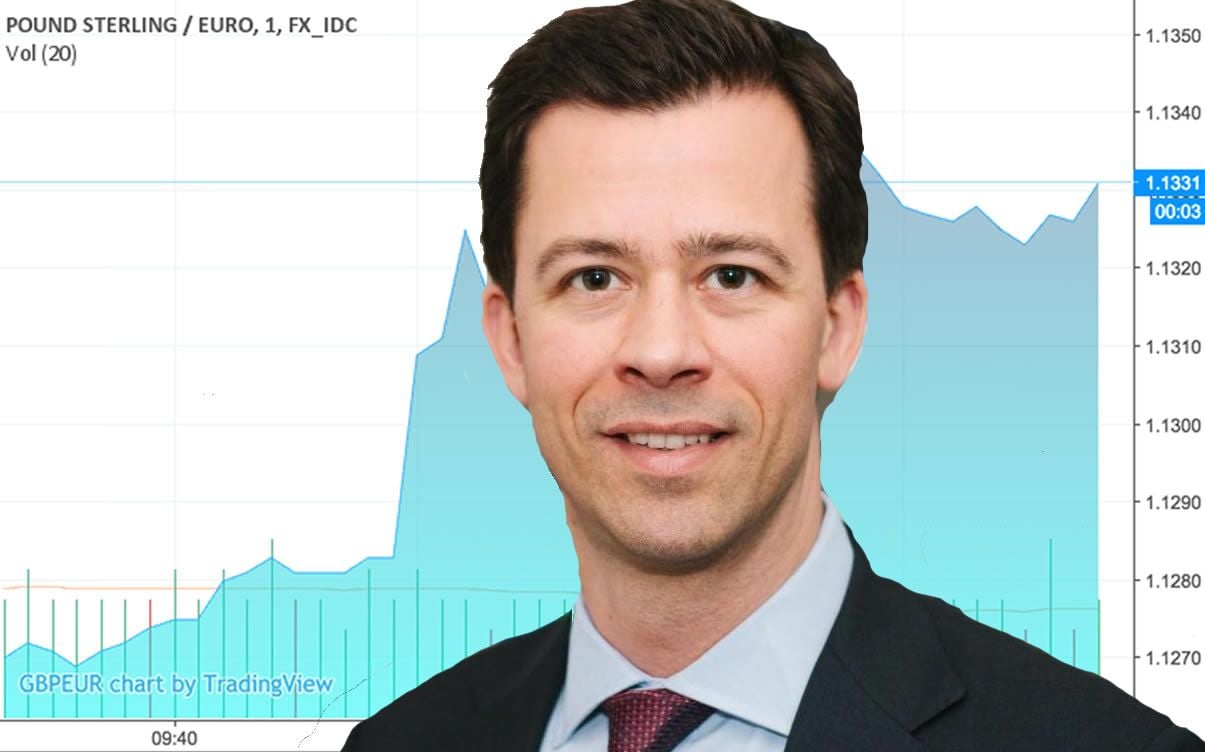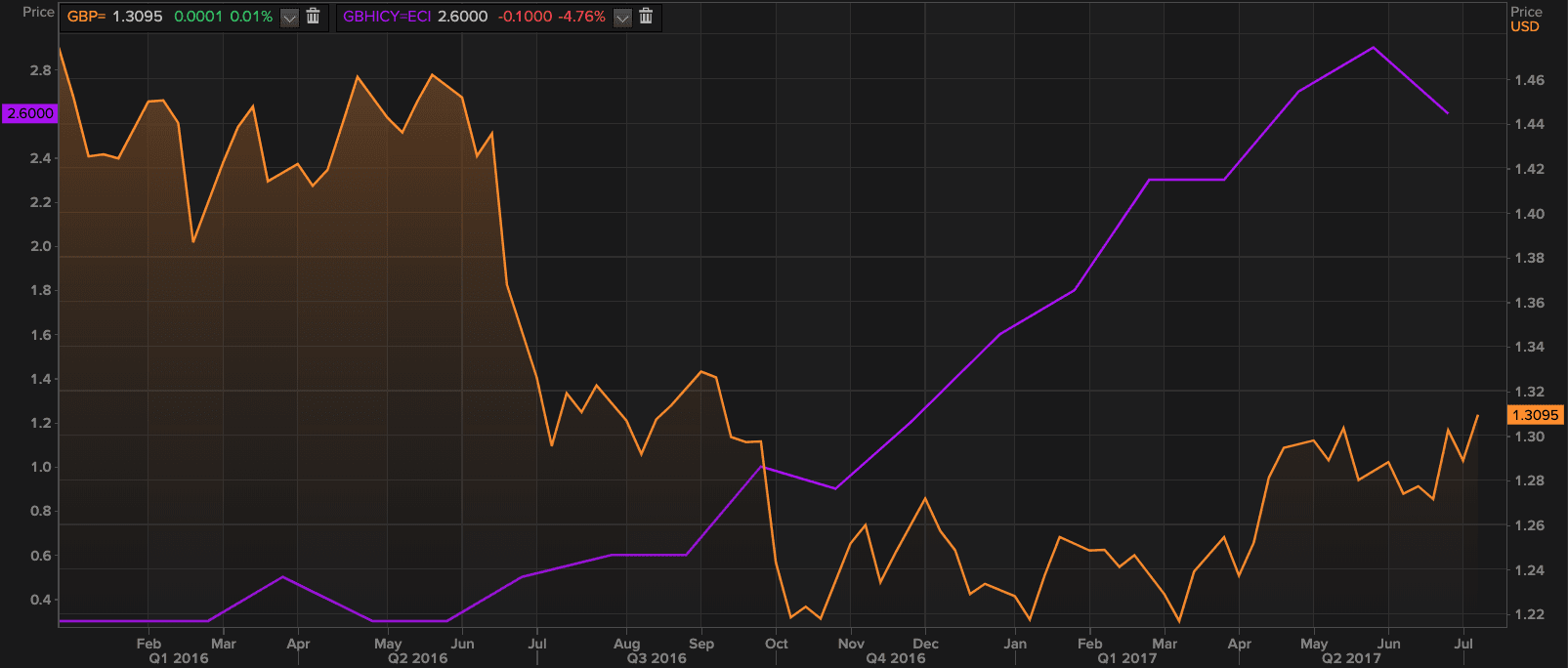Vlieghe: Interest Rates Could hit 0% or Go Higher to Defend Pound Sterling in 'No Deal' Brexit Outcome

Image © Bank of England, Pound Sterling Live
- Fresh warning on interest rates from Bank of England's Vlieghe
- Interest rates could hit 0% in event of 'no deal' Brexit
- But, rates could rise if Sterling slumps and inflation spikes
The Bank of England continued to prepare the UK for a potential interest rate cut with Monetary Policy Committee member Gertjan Vlieghe saying on Fridaty that Threadneedle Street could potentially cut interest rates to boost demand if Britain experienced repeated Brexit extensions and a slowing global economy.
However, he also warned that a 'no deal' Brexit could see the Bank raise interest rates if inflation spiked higher: we see this as subtext for the Bank needing to raise interest rates to protect the value of the Pound.
Speaking at a Thomson Reuters event, Vlieghe said the central bank might need to cut rates almost to zero in the event of a 'no deal' Brexit.
Vlighe added that it is possible that in a 'no deal' Brexit scenario, the Bank could need to cut interest rates to a record low, which would take the Bank Rate to below the 0.25% level seen following the 2016 EU referendum result.
He adds that it would not require a sizeable hit to demand to justify cutting rates to near zero.
The message from Vlieghe comes less than 48 hours after fellow MPC member Silvana Tenreyro said she doesn’t foresee any pressure to raise Bank Rate in the coming months, as she expects inflation to slip below the Bank's 2.0% target while a weaker global outlook gives cause for concern.
This in turn follows on from a speech by Bank of England Governor Mark Carney made a week prior in which it was communicated that markets should be prepared for the possibility of lower interest rates in the UK owing to growing concerns of a global economic slowdown.
Sterling fell on the messaging with markets immediately sensing a potential sea-change in stance on interest rates: the Bank had been widely to make its next move on interest rates a hike, a dynamic that has provided some element of downside protection to the Pound.
The messaging is now clearly on the 'dovish' side and explains why money markets have increased pricing for interest rate cuts on the horizon.
For Sterling, the shift in tone is a negative one as a currency tends to fall when its issuing central bank signals a potential rate cutting cycle.
"Growth below trend, inflation soon below target and large downside risks. If a central bank doesn't cut in those circumstances when would it?" asks Robert Wood, UK Economist at Bank of America Merrill Lynch Global Research.
BofAML have downgraded their forecasts for the UK economy to 1.2% in 2019, down from the 2.0% forecast at the start of 2019.
"We had previously assumed three hikes in 2019 and 2020 together, so the central growth outlook alone is worth switching to 1 rate cut in our view. The shift of the balance of risks from upside to downside in our view suggests shifting to two cuts rather than one. This is our forecast. We expect the Bank of England to cut rates 25bp in November 2019 and May 2020," says Wood.
Defending the Pound
Vlieghe does also however raise the prospect of an interest rate hike taking place after a 'no deal' Brexit were inflation to shoot higher.
But says it is possible the Bank may nee to raise rates if inflation expectations are de-anchored by a 'no deal' Brexit outcome.
This is almost certainly another way of saying that a sharp fall in the value of Sterling following a 'no deal' vote could well trigger a sharp spike in inflation, and raising interest rates would be one way of putting a floor under inflation.
The Bank is notoriously coy on commenting on the value of Sterling lest they be accused of currency manipulation, but the subtext here is clear.
The Bank is right to be concerned about the value of the Pound when targeting inflation as there is a clear relationship between sharp moves in the currency and price changes.

Image courtesy of Thomson Reuters
The above chart shows moves in the value of the GBP/USD exchange rate (orange) and the change in CPI inflation (purple) in the wake of the EU referendum result in 2016: the Pound fell, and prices rose sharply in coming months as the cost of imports rose.
This is understandable when we consider the UK runs a sizeable trade deficit, meaning it is heavily reliant on the import of goods, particularly food and consumer goods.
The Bank knows that in order to deliver its mandate of ensuring price stability, a stable Pound is essential; hence the message from Vlieghe that rates might have to rise in the event of a 'no deal' Brexit.
Time to move your money? Get 3-5% more currency than your bank would offer by using the services of foreign exchange specialists at RationalFX. A specialist broker can deliver you an exchange rate closer to the real market rate, thereby saving you substantial quantities of currency. Find out more here.
* Advertisement




